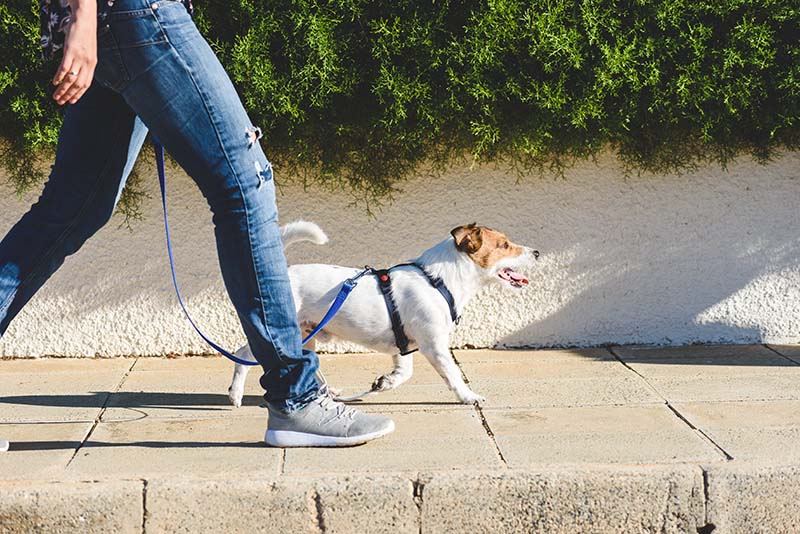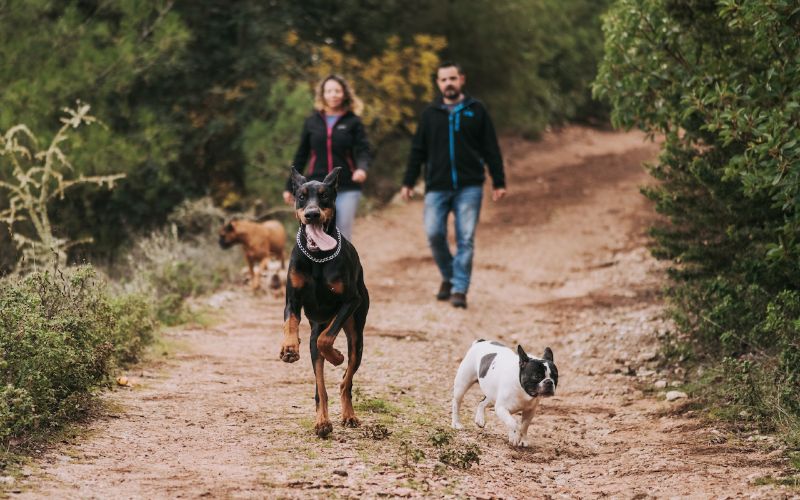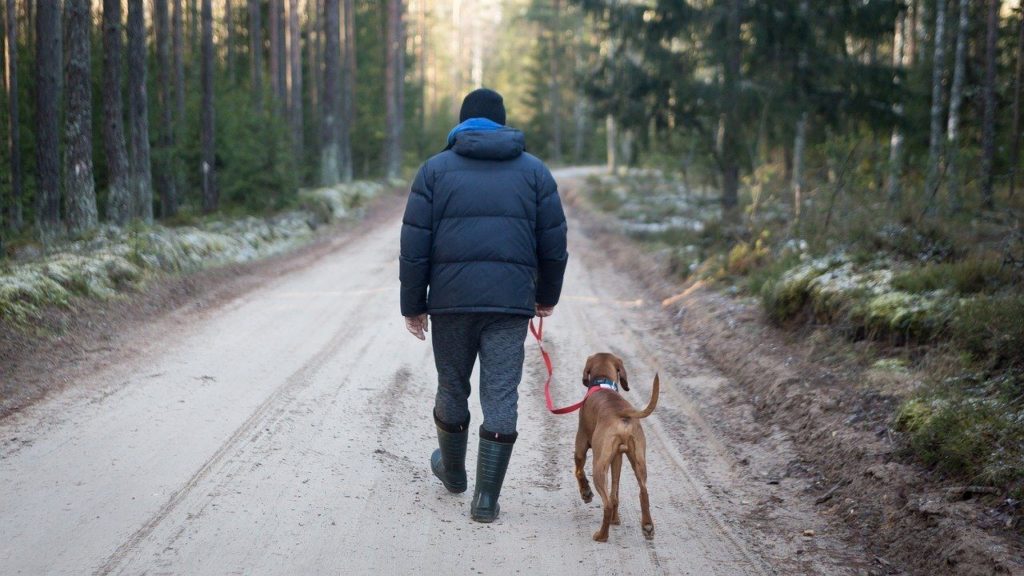When is the Best Time of Day to Walk My Dog? What You Should Know
Updated on

The best time of day to walk your dog is generally in the morning. Your dog will wake up each morning with a new dose of energy. Therefore, it is useful to let them run some of this energy out as quickly as possible. You can walk low-energy dogs in the evening if that’s the only time you have. However, high-energy dogs likely need a walk in the morning and another in the evening. Before you adopt a high-energy dog, be sure that you have the time to exercise them.
Morning walks also work best for puppies, who likely have a full bladder after a night indoors. Senior dogs also have a weaker bladder and often need to relieve it early in the morning. If you don’t walk your dog in the morning, you risk accidents and poor behavior throughout the day. It is often not a good idea to leave your dog home alone all day without a proper walk in the morning.
Of course, you’ll need to consider your environment and the weather. If it is very cold where you are, it may be best to wait until the afternoon for a walk. However, keeping your dog on a schedule is important so they know what to expect.
How Often Should You Walk a Dog?
Most dogs need at least two walks a day unless they’re very low-energy. Some toy breeds never need walking as long as you have a scheduled playtime. Other breeds may have very rigorous walking requirements. Research your breed before adopting a dog to ensure you meet its exercise requirements. Dogs can help their humans stay active, as they need walks. However, getting a very high-energy dog isn’t the best option for someone who would rather spend their days cuddling on the couch.
Dogs generally need anything from 20 minutes to 2 hours of daily walking. Preferably, you should separate these into two sessions—one at night and one in the morning. However, if your dog requires only a short walk, you may decide to do a singular walk in the morning.
Younger and older dogs may need less exercise. Younger dogs should never be forced-exercised, often leading to growth plate problems. It can injure your canine and cause joint problems in the future. Therefore, aim for very short but frequent walks.
Generally, more outside time exercising is better. However, watch for signs of exhaustion and over-exertion. Many dogs don’t know when to stop and will continue to exercise with your encouragement even past the time when it is healthy for them.

Should You Walk a Dog Before or After They Eat?
You don’t have to take your dog walking before a meal, but it is often better. Bloat (a common, deadly condition in larger dogs) may occur after a dog consumes food and exercises heavily. Therefore, you may want to wait for at least 30 minutes to an hour after your dog eats to exercise them. Alternatively, you can take your dog for a walk before they eat.
Just like exercising on a heavy stomach doesn’t feel very good for humans, it doesn’t feel very good for dogs.
What Time Should a Dog’s Last Walk Be?
Preferably, it would help to take your dog out before bedtime. However, this doesn’t necessarily have to be a complete walk. Your goal should be for your dog to use the bathroom, which may not take more than 10 minutes. If your dog doesn’t require extensive exercise, you can end the walk at that point. Just be sure you’re meeting your dog’s exercise needs at other times.
Of course, this last walk may be very close to your dog’s dinner. However, if you keep the walk short, you likely won’t have difficulty with your dog’s stomach being full.

Should You Let Your Dog Sniff While Walking?
You should let your dog sniff while walking. Sniffing for dogs is similar to reading a book. It allows the dog to explore the area and provides some mental stimulation just like reading a book does. It prevents your dog from getting bored, which can cause behavioral issues. More intelligent dogs require more stimulation, so they should be allowed to sniff more.
Of course, you can choose whether to let your dog read a page or the whole book. We recommend having a “sniffing spot” where you stop to let your dog sniff—preferably about halfway through the walk. That way, your dog isn’t stopping every few steps to sniff but also gets to sniff a little bit. It’s all about balance. You want both in your walk, preferably.
Conclusion
Morning time is usually the best time to walk dogs. Walking at the start of the day allows the canine to get all their energy out before you leave for work. However, energetic dogs may benefit from splitting their walk into multiple sessions. Dogs that require over an hour of exercise likely need to be exercised in spurts—not all at once.
Different walks can be of differing lengths, though. In this case, we recommend your longest walk be in the morning, with several shorter walks throughout the day as possible. Many people have a dog walker come during the day if they are gone for much of the day.
Featured Image Credit: alexei_tm, Shutterstock












